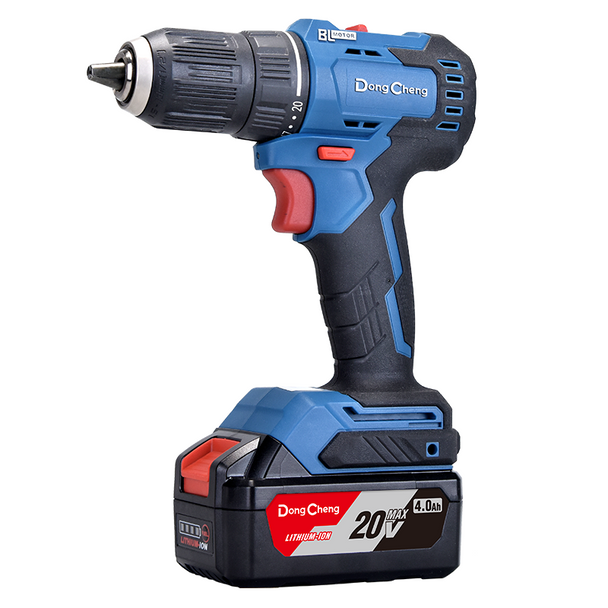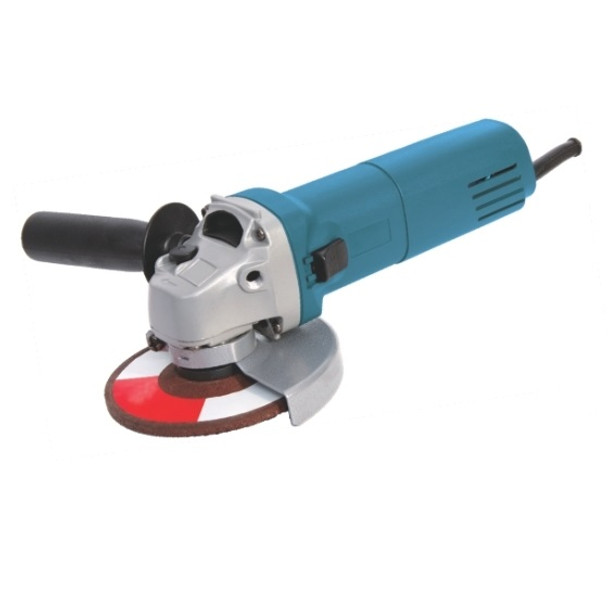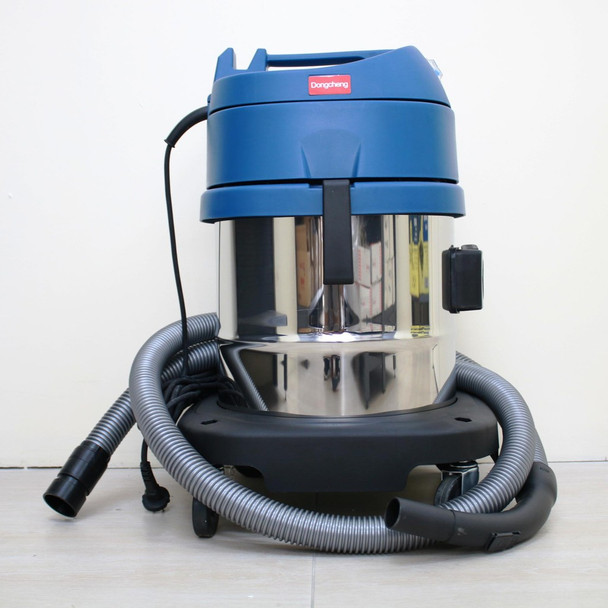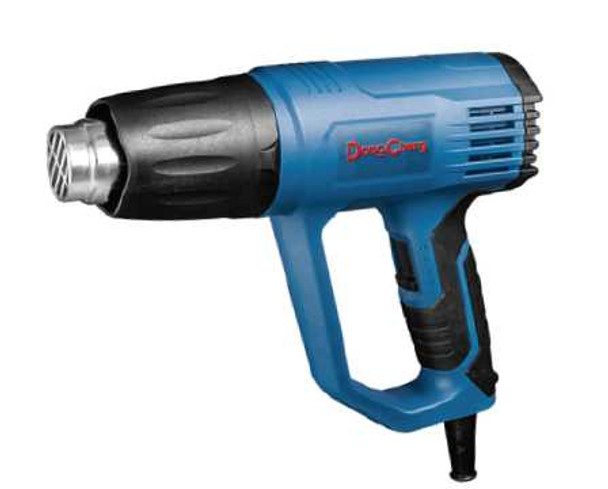Bosch Power Tools Maintenance: Tips for Long-Term Performance
Key takeaway:
Maintaining your power tools is essential for ensuring their longevity and optimal performance. Regular maintenance is essential for maximizing the longevity and performance of Bosch power tools. By implementing simple yet effective maintenance practices, such as routine cleaning and lubrication, users can minimize wear and tear, prevent unexpected breakdowns, and ensure optimal functionality over the long term. Investing time and effort into proper maintenance not only extends the lifespan of power tools but also enhances their reliability, efficiency, and overall productivity, ultimately leading to superior results in woodworking, construction, and DIY projects.
Introduction:
In woodworking, construction, and DIY projects, Bosch power tools have earned a reputation for their reliability, precision, and durability. However, like any mechanical equipment, regular maintenance is crucial to ensure their long-term performance and efficiency. Effective maintenance of power tools is paramount for several reasons. Firstly, it ensures their continued reliability and performance over time, minimizing the risk of unexpected breakdowns or malfunctions during critical tasks. Additionally, routine maintenance helps prevent premature wear and tear on essential components, preserving the tool's structural integrity and longevity. By investing time in maintenance activities, users can also optimize the efficiency and accuracy of their power tools, enhancing productivity and achieving superior results in their projects.
One fundamental aspect of power tool maintenance is regular cleaning and lubrication of moving parts. Over time, dust, debris, and residues can accumulate within the tool's mechanisms, leading to friction, overheating, and decreased performance. To mitigate these issues, it's essential to clean your Bosch power tools after each use, removing any buildup of dirt or grime with a soft brush or cloth. Additionally, applying a suitable lubricant to bearings, gears, and other moving components can help reduce friction and ensure smooth operation. By incorporating this simple yet effective maintenance practice into your routine, you can significantly extend the lifespan of your Bosch power tools and optimize their long-term performance.
In this guide, we'll delve into the realm of Bosch Power Tools Maintenance, offering valuable tips and insights to help you prolong the lifespan of your tools and optimize their functionality. From routine inspections to preventive maintenance tasks, we'll explore the importance of proper care for your power tools and provide practical advice to keep them operating at peak performance.
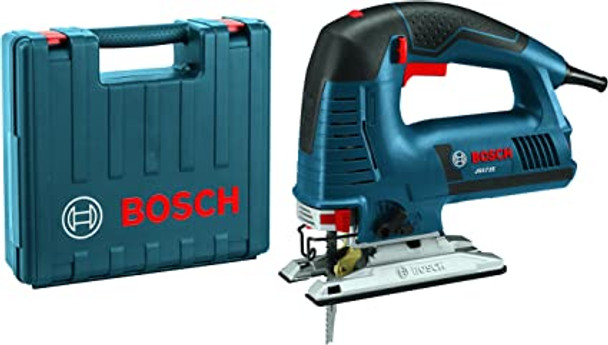
Buy online....BOSCH Power Tools Jigsaw Kit, GST750
Tips for Power tool maintenance
Power tools, particularly those crafted by Bosch, are precision instruments designed to deliver reliable performance over the long term. Proper maintenance is essential to ensure their continued effectiveness and longevity. Here are some invaluable tips for maintaining your Bosch power tools:
1. Regular Cleaning and Inspection
Keeping your Bosch power tools clean is crucial for their optimal performance and durability. Regular cleaning not only extends their lifespan but also ensures safe operation. Here's a step-by-step guide to effective cleaning procedures:
Cleaning Procedures for Bosch Power Tools:
- Unplug or Remove Batteries: Always disconnect the power before beginning any cleaning procedure. For corded tools, unplug them from the electrical outlet, and for cordless tools, remove the battery pack.
- Exterior Cleaning: Begin by wiping down the exterior of the tool with a clean, dry cloth to remove any surface dust, debris, or oil residue. Pay close attention to the handles, switches, and ventilation apertures.
- Air Blowing: To clean dust and debris from hard-to-reach spots like vents, switches, and nooks, use compressed air or a handheld air blower. This helps to prevent buildup, which may affect the tool's function.
- Brushing and Scrubbing: For stubborn grime or residue buildup, use a soft-bristled brush or toothbrush along with a mild detergent solution to gently scrub the surfaces. Avoid using harsh chemicals or abrasive materials that could damage the tool's finish.
- Lubrication: Apply a little amount of lubricating oil to moving parts including gears, bearings, and joints to minimize friction and increase their lifespan. To avoid compatibility difficulties, use only the lubricants recommended by Bosch.
- Filter Maintenance: If your Bosch power tool is equipped with a filter, such as a dust collection bag or air filter, clean or replace it according to the manufacturer's instructions in the user manual, to maintain optimal airflow and filtration efficiency.
- Storage: After cleaning, ensure that the tool is thoroughly dry before storing or using it. Also, keep your Bosch power tools in a clean, dry place away from extreme heat, moisture, and dust. To protect against damage during shipment or long-term storage, use protective cases or storage bags.
Buy online....DongCheng Cordless Brushless Driver Drill DCJZ2050 (TYPE DM/EM/Z)
Importance of Regular Inspection:
Regular inspection is another fundamental aspect of power tool maintenance that helps identify potential issues early on, preventing costly repairs or accidents. Here's why it's crucial:
- Early Detection of Wear and Tear: Through regular inspection, you can identify signs of wear and tear such as frayed cords, cracked casings, or loose screws before they escalate into more significant problems.
- Safety Assurance: Inspecting your Bosch power tools regularly ensures that they remain in safe working condition, minimizing the risk of malfunctions or accidents that could cause injury to yourself or others.
- Optimal Performance: Detecting and addressing issues promptly ensures that your power tools continue to perform at their best, maintaining productivity and efficiency in your work projects.
- Preservation of Investment: By taking proactive measures to inspect and maintain your Bosch power tools, you safeguard your investment and maximize their lifespan, ultimately saving money on costly repairs or replacements.
2. Lubrication and Oil Changes
Selecting the appropriate lubricant for your Bosch power tools is essential for ensuring smooth operation and preventing premature wear. Here are some common types of lubricants suitable for various components of power tools:
Types of Lubricants Suitable for Bosch Power Tools:
- Multipurpose Grease: Multipurpose greases are versatile lubricants suitable for a wide range of applications in power tools. They provide excellent lubrication for gears, bearings, and other moving parts, helping to reduce friction and wear.
- Silicone Lubricants: Silicone lubricants are ideal for lubricating plastic and rubber components of power tools, such as handles, grips, and seals. They offer long-lasting lubrication and are resistant to high temperatures and moisture.
- Machine Oil: Machine oils, such as light machine oil or sewing machine oil, are suitable for lubricating small, intricate components like joints, hinges, and linkages in power tools. They penetrate tight spaces and provide excellent corrosion protection.
- Lithium Grease: Lithium greases are formulated to withstand high temperatures and heavy loads, making them suitable for use in heavy-duty power tools like drills, impact drivers, and rotary hammers. They offer long-lasting lubrication and protection against rust and corrosion.
- Graphite Lubricants: Graphite lubricants are dry lubricants that are ideal for reducing friction and preventing sticking in mechanisms like switches, triggers, and sliding surfaces. They leave behind a dry film that does not attract dust or dirt.
When selecting a lubricant for your Bosch power tools, refer to the manufacturer's recommendations and specifications to ensure compatibility and optimal performance. However, Bosch power tools typically require grease rather than oil, so you can not go wrong if you use a high-quality, multi-purpose grease that’s compatible with the tool’s components.
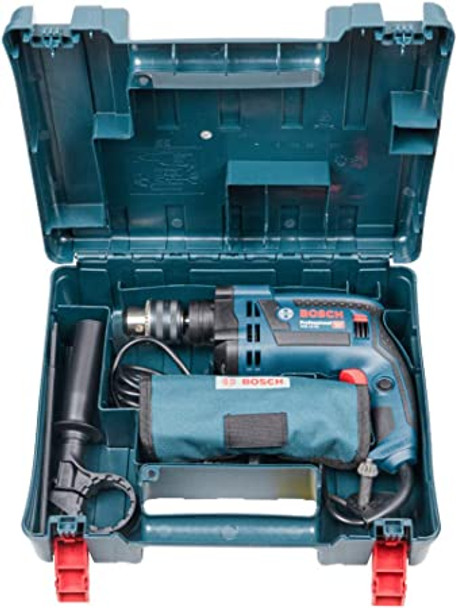
Buy online....Bosch GSB 16 RE Professional Impact Drill with 100 Accessories
Frequency and Process of Oil Changes:
Regular oil changes are essential for maintaining the efficiency and longevity of your Bosch power tools. Here's a guide to the frequency and process of oil changes:
- Frequency: The frequency of oil changes depends on the type of power tool and its usage. Bosch power tools don’t use oil in the same way engines do, but any lubrication system should be checked regularly. As a general rule of thumb, check and lubricate your power tools according to the manufacturer's recommendations or at least every three to six months, especially for heavily used tools. Also, whenever the tool shows signs of increased friction or noise, it’s time to re-grease. This might be after extensive use or long periods of storage.
- Process:
- Preparation: Before starting the oil change process, ensure that the power tool is unplugged or the battery is removed to prevent accidental activation.
- Access Points: Refer to the user manual or schematic diagram to locate the access points for lubrication. These may include oil ports, grease fittings, or disassembly points for internal lubrication.
- Cleaning: Clean the lubrication points and surrounding areas using a cloth or brush to remove any dirt, debris, or old lubricant buildup that could interfere with proper lubrication.
- Application: Apply the appropriate lubricant to the designated lubrication points in accordance with the manufacturer's recommendations. Use a grease gun, oil dropper, or brush as appropriate for the application.
- Distribution: Operate the power tool briefly to distribute the lubricant evenly throughout the moving parts. Check for any excess lubricant and wipe away as necessary.
- Inspection: After lubricating, visually inspect the tool for any signs of leaks, abnormal noises, or excessive friction. Address any issues promptly to prevent further damage.
3. Proper Storage Practices
Proper storage is vital for maintaining the integrity and performance of your Bosch power tools, especially during periods of non-use or when they're not in operation. Here are some essential tips for storing your tools to prevent damage:
Tips for Storing Bosch Power Tools to Prevent Damage:
- Use designated storage: Assign a specific place for each tool to prevent physical damage.
- Protect from elements: Store tools in cases or cabinets to protect from dust, moisture, and environmental conditions.
- Avoid extreme temperatures: Keep tools in a climate-controlled environment to prevent damage from heat or cold.
- Secure batteries: Store batteries in a dry place and avoid extreme temperatures to prolong their life.

Buy online.....DongCheng Hammer Drill 600W, 26mm DZC05-26
Importance of Storing Tools in a Controlled Environment:
Storing your Bosch power tools in a controlled environment offers several benefits that contribute to their longevity and performance. Here's why it's important:
- Prevents corrosion: A controlled environment protects against rust and corrosion, extending tool life.
- Enhances safety: Proper storage minimizes the risk of accidents and injuries.
- Maintains performance: Tools stored in a controlled environment retain their functionality and precision.
- Organizational efficiency: An organized storage system saves time and improves workflow.
4. Preventive Maintenance Schedule
Establishing a preventive maintenance schedule is essential for ensuring the ongoing performance and longevity of your Bosch power tools. Here's a guide to creating an effective maintenance schedule:
Creating a Maintenance Schedule for Bosch Power Tools:
- Assess Tool Usage: Start by evaluating the frequency and intensity of usage for each Bosch power tool in your inventory. Tools that are used more frequently or for heavy-duty tasks may require more frequent maintenance intervals.
- Refer to Manufacturer Guidelines: Consult the user manuals, maintenance guides, or online resources provided by Bosch for specific maintenance recommendations and intervals for each tool model. These guidelines often outline suggested maintenance tasks and frequencies based on usage patterns and environmental conditions.
- Consider Environmental Factors: Take into account the environmental conditions in which your power tools are used and stored. High humidity, dust, temperature extremes, and other factors can impact maintenance requirements. Adjust your schedule accordingly to account for these variables.
- Create a Calendar or Spreadsheet: Establish a maintenance calendar or spreadsheet to track scheduled maintenance tasks for each Bosch power tool. Clearly indicate the type of maintenance required, the frequency of each task, and the date of the last maintenance performed.
- Set Reminders: Use calendar alerts, task management apps, or other reminder systems to notify you when scheduled maintenance tasks are due. This ensures timely execution of maintenance activities and prevents lapses in upkeep.
- Flexibility and Adaptation: Be prepared to adjust your maintenance schedule based on changing circumstances, such as increased usage, equipment aging, or performance issues. Regularly evaluate the effectiveness of your maintenance program and make adjustments as needed.
Buy online....DongCheng Angle Grinder DSM125A
Checklist for Routine Maintenance Tasks:
To facilitate routine maintenance tasks for your Bosch power tools, consider creating a comprehensive checklist covering essential maintenance activities. Here's a sample checklist to guide you:
- Cleaning:
- Exterior cleaning to remove dirt, dust, and debris.
- Interior cleaning to clean dust from vents and components.
- Lubrication of moving parts and mechanisms.
- Inspection:
- Check power cords, plugs, and connectors for damage or wear.
- Inspect switches, triggers, and controls for proper operation.
- Examine housing, casings, and handles for cracks or damage.
- Battery Maintenance (for cordless tools):
- Check battery charge level and recharge as needed.
- Inspect battery terminals for corrosion and clean if necessary.
- Store batteries properly in a cool, dry environment.
- Functional Testing:
- Test tool operation to ensure proper functionality.
- Check for unusual noises, vibrations, or performance issues.
- Verify safety features such as blade guards, depth stops, or safety switches.
- Accessory Inspection:
- Inspect cutting blades, drill bits, and other accessories for wear or damage.
- Clean or replace accessories as needed to maintain performance and safety.
- Documentation:
- Record maintenance activities, including dates, tasks performed, and any issues identified.
- Keep records of repairs, parts replacements, and warranty information for reference.
Buy online.....Dongcheng Vacuum Cleaner 1200W/15L DVC15
Troubleshooting Common Issues during power tool maintenance
While regular maintenance can help prevent many issues, it's inevitable that you may encounter common problems with your Bosch power tools from time to time. Here's how to identify and address them effectively:
- Loss of Power or Performance: If your power tool suddenly loses power or its performance diminishes, it could indicate several potential issues, such as a worn-out motor, faulty power cord, or battery depletion (for cordless tools). Check the power source, inspect the cord for damage, and test the battery charge level. If these components appear to be functioning correctly, the motor or internal components may require servicing or replacement.
- Overheating: Overheating is a common issue, especially during prolonged or heavy use. If your power tool becomes excessively hot to the touch or emits a burning odor, immediately stop using it and allow it to cool down. Check for obstructions in ventilation openings, clean any accumulated debris, and ensure proper airflow around the tool during operation. Overheating can also be caused by worn-out or damaged components, so inspect internal parts for signs of wear or malfunction.
- Strange Noises or Vibrations: Unusual noises or vibrations during operation can indicate loose or worn-out components, misalignment, or internal damage. Inspect the tool for loose screws, bolts, or fasteners and tighten them as needed. Check rotating components such as blades, gears, or bearings for signs of wear or damage. If the problem persists, discontinue use and seek professional assistance to diagnose and repair the issue.
- Stalling or Jamming: If your power tool stalls or jams during use, it could be due to several factors, including dull blades, improper operation, or material obstructions. Check cutting blades or bits for dullness or damage and replace them if necessary. Ensure that the material being worked on is properly secured and supported to prevent binding or kickback. Clean debris from moving parts and ensure proper lubrication to reduce friction and prevent stalling.
Buy online.....DongCheng-HEAT GUN-DQB03-1600
Steps to Take When Encountering Issues
When you encounter issues with your Bosch power tools, it's essential to take appropriate steps to address them promptly and effectively. Here's what to do:
- Stop Using the Tool: If you notice any abnormal behavior, such as overheating, strange noises, or loss of power, immediately stop using the tool to prevent further damage or safety hazards.
- Diagnose the Problem: Take the time to assess the situation and identify the root cause of the issue. Check for visible signs of damage, loose components, or obstructions that may be affecting performance.
- Refer to the User Manual: Consult the user manual or online resources provided by Bosch for troubleshooting guidance and recommended solutions for common issues. Follow any suggested troubleshooting steps or maintenance procedures outlined by the manufacturer.
- Perform Basic Checks: Conduct basic checks such as inspecting power cords, batteries, switches, and accessories to ensure they are functioning correctly. Clean or replace any damaged or worn-out components as needed.
- Seek Professional Assistance: If you're unable to resolve the issue on your own or if it involves complex internal repairs, seek professional assistance from authorized Bosch service centers or qualified technicians. Attempting DIY repairs on intricate power tool components can lead to further damage or safety risks.
- Preventive Measures: Once the issue has been addressed, incorporate preventive measures into your maintenance routine to avoid similar problems in the future. Regularly inspect and maintain your Bosch power tools to prevent recurring issues and ensure ongoing performance.
Related Article:
10 Tips on Simple Ways to Keep Your Power Tools in Good Working Order
Conclusion
Maintaining your Bosch power tools is not just about preserving their functionality; it’s about ensuring their longevity, reliability, and safety. Regular cleaning, proper lubrication, and diligent storage practices form the cornerstone of effective tool maintenance. By adhering to a preventive maintenance schedule and being equipped to troubleshoot common issues, you can significantly extend the life of your tools and maintain their performance at peak levels.
Remember, the effort you put into caring for your tools reflects directly on the quality of your work. A well-maintained power tool is a dependable partner in your projects, ready to deliver precise results whenever you need it. Whether you're a professional tradesperson, hobbyist, or DIY enthusiast, investing time and effort into caring for your Bosch power tools will yield dividends in the form of enhanced performance, longevity, and satisfaction in your work. For more information or enquiries, Contact Us Today.
Recent Posts
-
Comparative Analysis: Distilled Water vs. Tap Water for Battery Use
Key takeaway:The purity of distilled water helps in maintaining the optimal chemical balance within …26th Apr 2024 -
A Complete Buyer’s Guide to Welding Machines in Mangoro, Ikeja, Lagos
IntroductionThere are currently numerous dealers of welding machines in Lagos, but selecting th …25th Apr 2024 -
Where to buy welding equipment in Nigeria Near me
When you're in need of welding equipment in Nigeria, finding a reliable source is crucial to en …22nd Apr 2024


